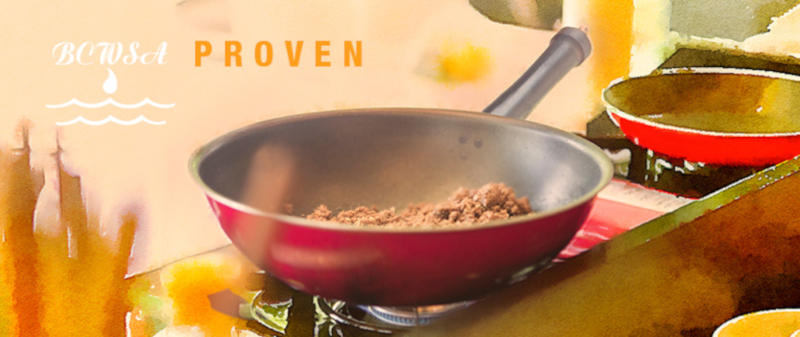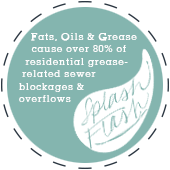Why a FOG-free Zone Matters
Fact is, FOGS coat the inside of pipelines in the same way that fat accumulates in human arteries. By clinging to the inside of the pipe and building up over time, these three pipe-blockers cause costly household and environmental problems.
Preventing a FOG Attack
Regardless of price or model, garbage disposal and sink drains are not designed to process FOG. But these simple rules can help prevent the hassles, headaches and cost of a blockage…
- Pour cooled FOG into a glass container or old container such as a coffee can
- Wipe pots, pans and dishes with paper towels prior to rinsing
- Never empty a deep fryer down the drain. Instead wait until the oil has cooled, pour into a container and dispose of safely in the trash
- Use sink strainers to catch food particles and debris, then empty in the trash
- Read food labels to understand hidden sources of FOG.
Fats
Fats typically come from meat and dairy sources but can also come from plant sources, such as nut butters. It is usually in a solid form at room temperature and can be thrown directly into the trash. Placing these foods in the garbage disposal only reduces the size of the food, not the likelihood of creating a clog. If you’re not sure if something has fat in it, check the nutrition label.
Examples:
- Meat Trimmings
- Uncooked Poultry Skin
- Cheeses
- Ice Cream
- Peanut Butter
- Butter
- Shortening or Lard
Oils
Oil comes from plant sources such as vegetable oil, canola oil, olive oil, corn oil, etc. It may be used as a topping on food, such as salads or sandwiches or used to cook food, such a deep frying. It remains liquid at room temperature. Used oil should be poured into a can or jar before disposal. If it is poured down the drain, oil can coat pipes and get into any nooks and crannies, creating a slick surface that makes it easier for fats and grease to stick to.
Examples:
- Salad Dressing
- Cooking Oils: Vegetable, Canola, Olive, Corn
- Condiments
- Sauces
Grease
Grease occurs when fats from food melt under heat such as frying, boiling and baking, etc. Grease is deceptive because it is a liquid after cooking, but eventually cools into a solid. Pouring it down the drain means that at some point it will cool on the pipes in the collection system, harden, and then start a clog.
Examples:
- Cooked or Melted Fat from Meat, Bacon, Sausage, Duck, etc.
- Skin from Boiled Poultry
- Gravy
- Mayonnaise

